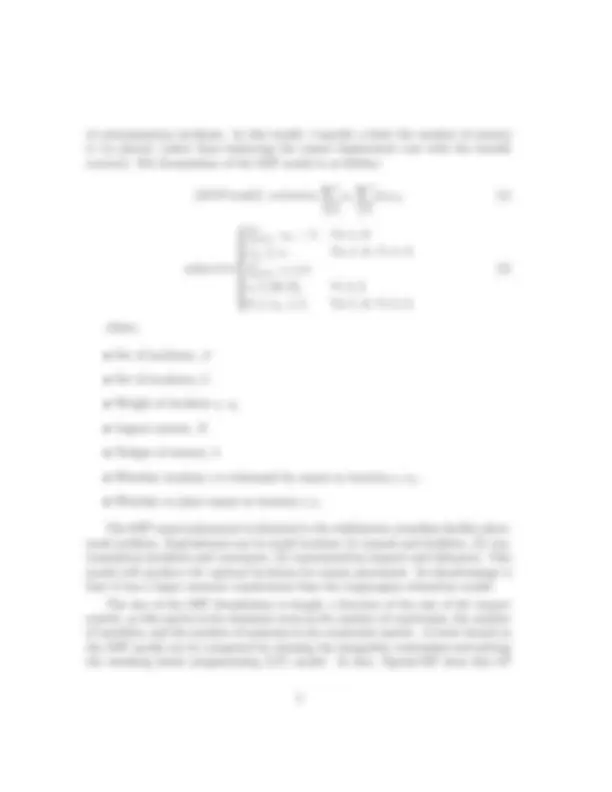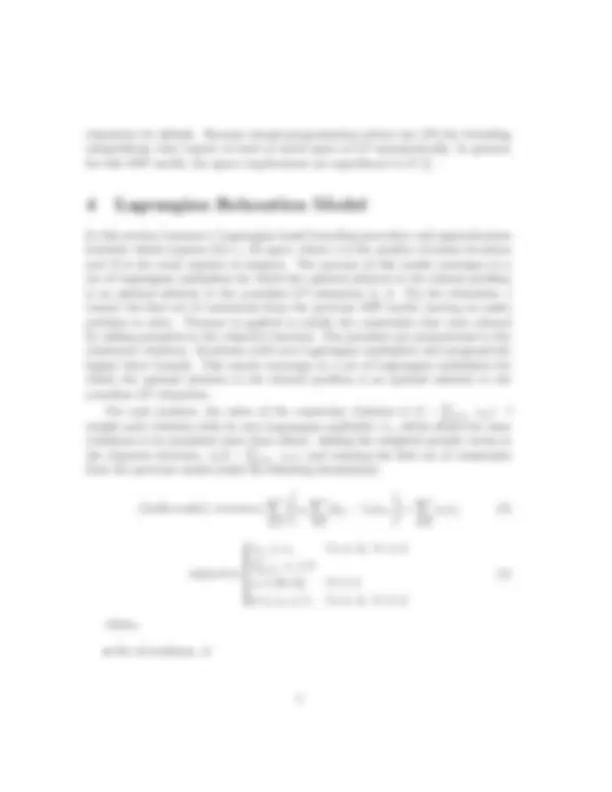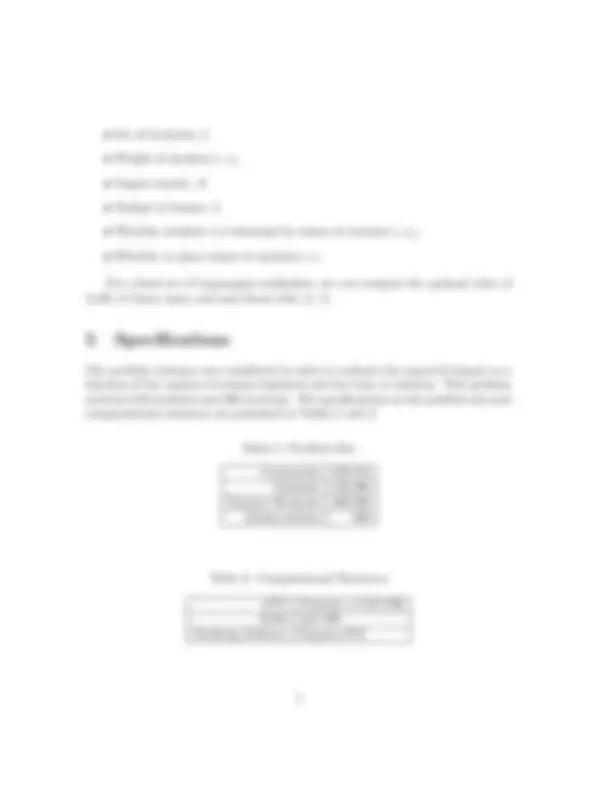





Study with the several resources on Docsity

Earn points by helping other students or get them with a premium plan


Prepare for your exams
Study with the several resources on Docsity

Earn points to download
Earn points by helping other students or get them with a premium plan
Community
Ask the community for help and clear up your study doubts
Discover the best universities in your country according to Docsity users
Free resources
Download our free guides on studying techniques, anxiety management strategies, and thesis advice from Docsity tutors
Material Type: Project; Class: 300 - EDUCATION & COMPUTER; Subject: EDUCATION; University: Rutgers University; Term: Fall 2008;
Typology: Study Guides, Projects, Research
1 / 7

This page cannot be seen from the preview
Don't miss anything!




Monitoring large, complex systems is an important part of ensuring their quality and safety. Monitoring using sensors is employed to safeguard drinking water supplies in addition to measures such as sampling and physical security. The objective of this project was to implement an optimal sensor placement model to monitor a drinking water supply. In theory, the model developed is general enough to be applied to the monitoring of many systems, not just drinking water systems. The development of such contamination warning systems (CWS) is challenged by factors such as time- varying demand, looped systems, limited resources, and large problem size.
For this optimization model implementation, the challenges are specifically the large problem size and the limited resources. The other challenges mentioned: time- varying demand and looped systems, are addressed in the parameter development stage of the problem, not in the optimization stage of the problem. The goal of the implementation is to observe the expected impact as a function of the number of sensors deployed. Researchers have developed a variety of methods to address the sensor placement problem including mixed-integer programming models, combina- torial heuristics, and general-purpose metaheuristics [1].
I implemented a sensor placement model in MOSEL that decides on the optimal locations for sensor placement in a contamination warning system. Sensor placement problems occur in a variety of settings where resources are vulnerable to accidental or intentional corruption because of their distributed geography. The goal is to place sensors in locations so that contamination incidents are detected early enough and in the correct locations so as to allow for effective public health and water utility intervention to mitigate health and economic impact. For simplicity, I will herein
refer to a general impact measure that is to be minimized. The optimal solution the the sensor placement model ensures that the limited resources (sensors) devoted to monitoring of service networks are most efficiently deployed. This report discusses two models for sensor placement: (1) Mixed-integer programming exact solution model (2) Lagrangian based lower-bounding method. Both models discussed in this report are based on work by Hart, Berry, et al. of Sandia National Laboratories.
The rest of the report is organized as follows. Section 2 describes the data gen- eration process. Section 3 describes the mixed-integer programming model. Section 4 describes the Lagrangian relaxation model. Section 5 describes the specifications for a particular problem instance. Section 6 provides results and a conclusion.
2 Model Data
It is common for sensor placement models to rely on transport simulation models. For example, an interested agency might use impact costs derived from statistics outputted by simulation tools such as EPANET [3]. Such a simulation must take into account hydraulic and water quality behavior within pressurized pipe networks to model the transport of contaminants through the network. There is an impact cost (risk metric) for each location, incident pair in the impact matrix as a result of the simulation. The weight of an incident is treated as the probability of the occurrence of each incident. The weight value is also randomly generated for this work.
For this project, I developed a Perl script that takes as input the number of locations, the number of incidents, the maximum impact, and a seed for a random number generator. The result of running the script is a new file that is formatted as a MOSEL input file and contains the synthetic weight for each incident and the synthetic impact value for each location, incident pair. This type of synthetic data is suitable for this project since the main objective is to develop mathematical models, not to develop a water flow simulation.
3 Mixed-Integer Programming Model
It has been shown that the canonical sensor placement formulation is equivalent to the well-know p-median facility location problem [1]. The objective is to place a limited number of sensors throughout the network to minimize the expected impact
relaxation by default. Because integer-programming solvers use LPs for bounding subproblems, they require at least as much space as LP asymptotically. In general, for this MIP model, the space requirements are superlinear in D [1].
4 Lagrangian Relaxation Model
In this section I present a Lagrangian based bounding procedure and approximation heuristic which requires O(n + D) space, where n is the number of sensor locations and D is the total number of impacts. The process of this model converges to a set of Lagrangian multipliers for which the optimal solution to the relaxed problem is an optimal solution to the p-median LP relaxation [1, 4]. For the relaxation, I remove the first set of constraints from the previous MIP model, leaving an easier problem to solve. Pressure is applied to satisfy the constraints that were relaxed by adding penalties to the objective function. The penalties are proportional to the constraint violation. Iterations yield new Lagrangian multipliers and progressively higher lower bounds. This search converges to a set of Lagrangian multipliers for which the optimal solution to the relaxed problem is an optimal solution to the p-median LP relaxation.
For each incident, the value of the constraint violation is (1 −
i∈L xai).^ I weight each violation with its own Lagrangian multiplier λα, which allows for some violations to be penalized more than others. Adding the weighted penalty terms to the objective function, λa(1 −
i∈L xai), and relaxing the first set of constraints from the previous model yields the following formulation:
(LaRe model) minimize
a∈A
αa
i∈L
(dai − λa)xai
a∈A
αaλa (3)
subject to
xai ≤ si, ∀ a ∈ A, ∀ i ∈ L ∑ i∈L si^ ≤^ b si ∈ { 0 , 1 }, ∀ i ∈ L 0 ≤ xai ≤ 1 , ∀ a ∈ A, ∀ i ∈ L
where,
For a fixed set of Lagrangian multipliers, we can compute the optimal value of LaRe in linear space and near-linear time [1, 4].
5 Specifications
One problem instance was considered in order to evaluate the expected impact as a function of the number of sensors deployed and the time to solution. This problem involved 150 incidents and 800 locations. The specifications on the problem size and computational resources are presented in Tables 1 and 2.
Table 1: Problem Size
Constraints 120, Variables 120, Nonzero Elements 360, Global entities 800
Table 2: Computational Resources
CPU Pentium 4 2.20 GHz RAM 512 MB Modeling Software Express-IVE
the minimum expected impact does not decrease any further as more sensors are available for placement. Identifying this point of diminishing returns is important in case sensors are being distributed among multiple water distribution networks. For example, if one water distribution network finds that it is well into its diminishing return region, while another water distribution network still has much room for improvement, the sensors may be reallocated in an intelligent manner.
An interesting observation for me was how the time to solution decreased as the number of sensors deployed increased. Specifically, the time to solution was quite reasonable (around 8 seconds) for this 800 locations, 150 incidents problem when the minimum expected impact is near the plateauing expected impact. The reason for this decreasing time to solution is that the branch and bound tree becomes smaller. The implication of the decreasing time to solution is that in case enough sensors are available, the time to solution for the optimal placement is more reasonable than if the number of sensors is relatively insufficient.
Future work includes completion of the Lagrangian relaxation model.
References
[1] Hart W.E., Berry J.W., Boman E., Phillips C.A., Riesen L., and Watson J., Limited-Memory Techniques for Sensor Placement in Water Distribution Net- works, Sandia National Laboratories, Albuquerque, NM.
[2] Hart W.E., Berry J.W., Murray M., Phillips C.A., Riesen L., and Watson J., SPOT: A Sensor Placement Optimization Toolkit for Drinking Water Contami- nation System Design, Sandia National Laboratories, Albuquerque, NM
[3] EPANET, Old Dominion University, Department of Civil and Environmental Engineering, http://eng.odu.edu/cee/resources/model/epanet.shtml
[4] Avella, P., Sassano, A., Vasil’ev I. Computational study of large-scale p-Median problems, Mathematical Programming, 109 (2007), pp. 89-114.
[5] Barahona, F., Chudak, F., Near-Optimal Solutions to Large Scale Facility Lo- cation Problems, Discrete Optimization, 2 (2005), pp. 35-50.
Fall 2008